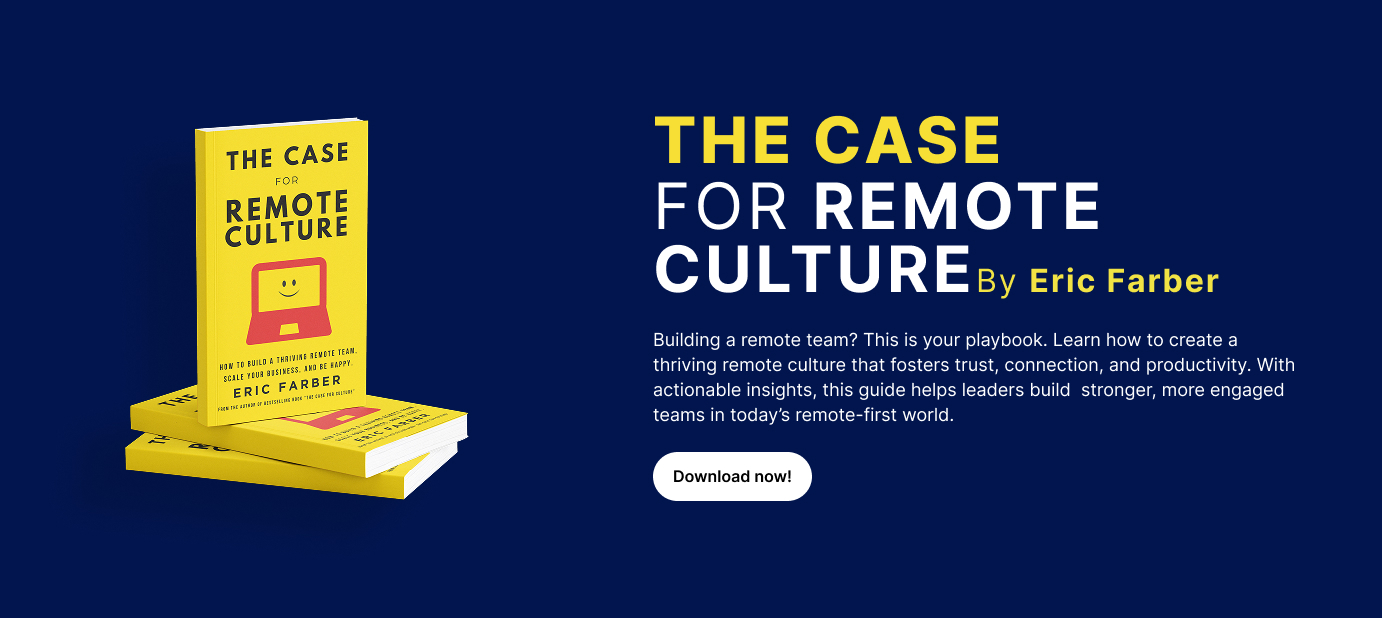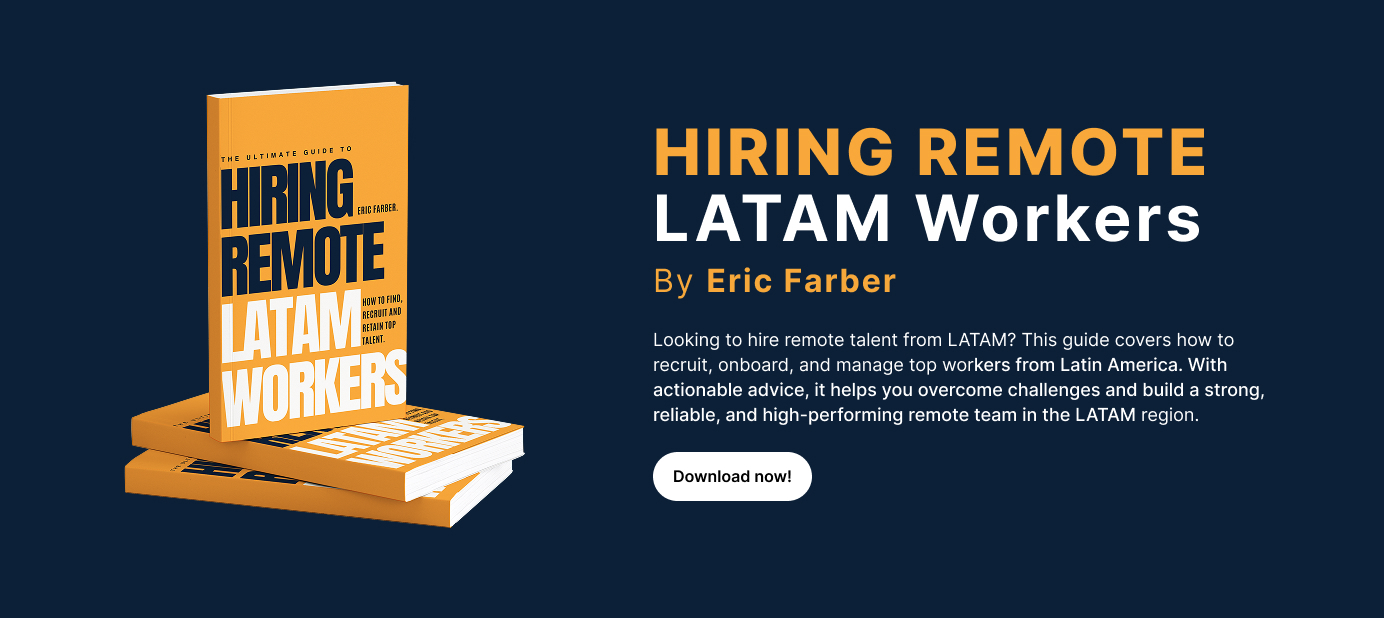Running a fully remote business with employees scattered across different time zones and continents takes more than just setting up the technical environment.
To succeed remotely, trust becomes your foundation. When trust breaks down in your virtual team, you face missed deadlines, employee frustration, and costly turnover—up to 200% of an employee’s salary to replace (Gallup, 2023). That’s a financial hit no scaling business can afford.
The flip side? Get trust right, and your remote team transforms into a high-performing machine. Teams with high trust and psychological safety show 19% higher productivity, 31% more innovation, 27% lower turnover rates, and 3.6x more engagement. For remote teams, these benefits are even more pronounced.
In this guide, we’re unpacking seven evidence-based strategies to build unshakable trust in your virtual team. Backed by data from McKinsey, Deloitte, Google’s groundbreaking Aristotle Project, and Gallup, this is your playbook to turn remote trust into your competitive edge.
Why Trust Matters More Than Ever in Remote Teams
Remote work’s here to stay, with 32.6 million Americans working remotely by 2025 (Forbes, 2023). Deloitte’s 2023 research shows 75% of remote teams wrestle with trust issues. Without trust, communication falters, morale drops, and your best people leave. For you, that’s a business problem with real financial impact.
Google’s landmark Aristotle Project uncovered that psychological safety is the #1 predictor of high-performing teams. In remote environments where nonverbal cues are limited, this safety becomes even more critical. Teams with high psychological safety are 76% more engaged and show 74% lower stress levels (Watson Wyatt research, 2023).
Trust directly addresses your biggest challenges:
- High labor costs: Hire top-tier talent from Latin America at 50-70% lower costs (Viva Global data), with trust systems ensuring performance despite distance.
- Talent shortages: When you build a trust-based remote culture, your talent pool expands globally, improving retention by 40% (Gallup, 2023).
- International hiring complexity: With the right trust framework, you can confidently manage teams across borders without constant worry about miscommunication.
- Scaling struggles: Trust-based systems let you onboard and integrate new team members 60% faster (McKinsey, 2023), accelerating your growth timeline.
Let’s break down how to build this trust, strategy by strategy.
Strategy 1: Set Crystal-Clear Expectations
Trust starts when everyone knows the game plan. Remote workers can’t peek over your shoulder or catch you in the hall for a quick clarification. Gallup’s 2023 data backs this up: teams with clear expectations are 2.5 times more likely to stay engaged. For you, engagement means less turnover and fewer $50,000+ rehiring bills.
How to Do It
- Write It Down: Spell out roles and deliverables in a shared doc.
- Example: “You’re building the payment module. Deadline’s Friday, 90% bug-free.”
- Use SMART Goals: Specific, Measurable, Achievable, Relevant, Time-bound.
- Example: “Cut customer response time by 20% in 30 days.”
- Document Workflows: Create process maps that show how work flows between team members.
- Example: “After QA testing, notify the team lead via Slack, then move card to ‘Ready for Review’ on Jira.”
- Check In: Confirm understanding with a quick, “Does this make sense? What obstacles do you foresee?”
Clarity saves you time, money, and headaches, especially when scaling across borders. According to Harvard Business Review, remote teams with documented expectations experience 42% fewer missed deadlines and 38% less rework, directly impacting your bottom line.
Strategy 2: Communicate Like a Pro (and Often)
Silence kills remote teams. Deloitte’s 2023 report found 85% of remote workers want regular updates from their managers. Without them, they assume the worst: you don’t care, or something’s wrong. For you, poor communication means misaligned projects and stalled growth, burning cash you can’t spare.
How to Do It
- Weekly Check-Ins: Block 30 minutes for team syncs on Zoom.
- A 2023 case study showed weekly team calls led to a 37.5% revenue boost and 25% higher employee satisfaction (McKinsey Remote Work Insights).
- Async Updates: Record a two-minute Loom video with priorities.
- Example: “Here’s where we’re at, focus on X this week.”
- Communication Channels: Define which tools are for what purpose.
- Example: “Slack for quick questions, email for formal approvals, Zoom for complex discussions.”
- Cultural Awareness: Adapt your communication to cultural norms.
- Ask your LATAM workers how they perceive some of your messages to be. Get feedback on your messages and discuss on a team meeting if you both understood the message(s) in the same way.
Frequent, clear communication keeps your team aligned and your scaling plans on track, no matter where they’re based. Buffer’s 2023 State of Remote Work found that teams with structured communication protocols experience 68% higher collaboration effectiveness, directly impacting project timelines and costs.
Strategy 3: Build Personal Connections
Trust isn’t just about tasks, it’s about people. Gallup’s 2023 research shows remote workers with strong team bonds are 40% less likely to burn out. For you, that’s a retention goldmine. Lower turnover means fewer talent searches in a market where skilled hires are scarce.
How to Do It
- Virtual Hangouts: Host a monthly coffee chat or trivia night.
- Teams that socialize virtually experience 43% higher cohesion (Deloitte, 2023).
- Meeting Icebreakers: Kick off with, “Share one weekend win.”
- Example: “I hiked with my dog, your turn!”
- 1:1 Time: Ask, “How’s life outside work?”
- Personal check-ins increase trust by 39% (Google Aristotle Project findings).
- Cultural Integration: Celebrate diverse holidays and traditions.
- Example: Get to know about the important holidays in LATAM and discuss those upcoming holidays on your team meetings. Not all your employees may be taking that day off, but for some, it can make them feel more comfortable with approaching you for a PTO request if they want to take the day off.
These small moves build loyalty, keeping your team tight and your hiring costs low. Microsoft’s 2023 research found that remote teams with strong personal connections report 65% higher job satisfaction and 47% greater willingness to go above and beyond on projects, directly impacting your deliverables and deadlines.
Unlock the full potential of your LATAM team with these 3 essential management principles.
Strategy 4: Empower Through Autonomy
Micromanaging screams distrust and tanks morale. McKinsey’s 2023 data shows autonomous teams are 30% more productive. For you, that’s more output without adding headcount, stretching your budget further.
How to Do It
- Set Outcomes, Not Steps: Say, “Test the app by Thursday, 95% crash-free.”
- Trust Their Process: Let them pick tools and workflows.
- Companies in tech startups, where remote work is more established, show 15% lower “productivity paranoia” (TechCrunch, 2024).
- Review Results: Focus on deliverables, not hours.
- Teams measured by outcomes rather than activity report 72% higher motivation (Gallup, 2023).
- Provide Resources: Give them what they need to succeed autonomously.
- Example: “Here’s access to TestRail and a testing budget. Let me know if you need anything else.”
Autonomy boosts trust and efficiency, perfect for scaling fast without bloating payroll. According to Harvard Business Review, remote teams with high autonomy deliver 28% higher quality work and complete projects 24% faster, directly improving your market responsiveness and customer satisfaction.



